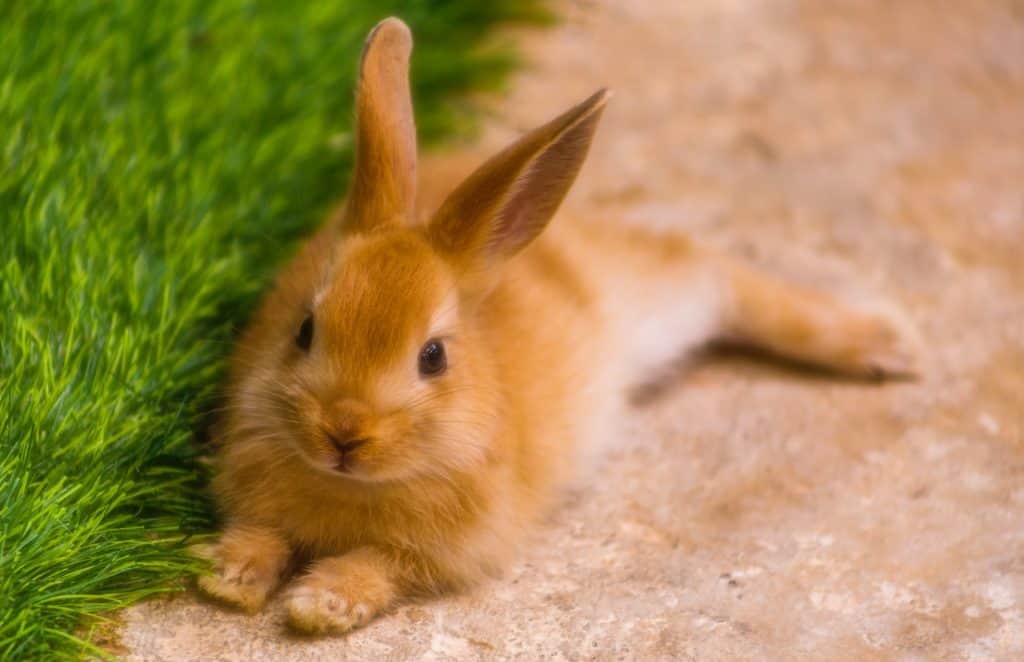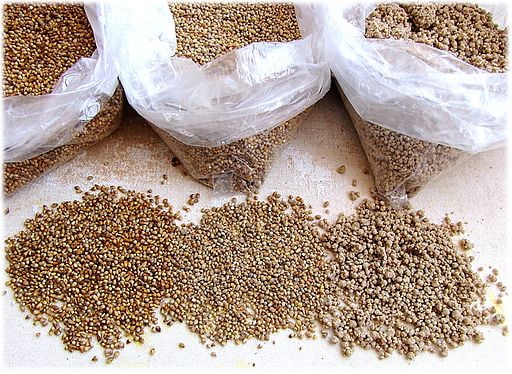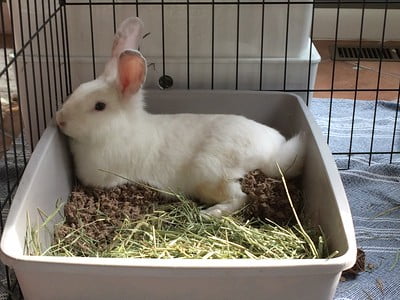Last Updated on March 9, 2023 by Marjon Ramos
It might not be obvious at first, but rabbits do feel a variety of complex emotions. But because rabbits are prey creatures, they can’t easily convey these emotions because any sign of weakness in nature would just get you killed.
Rabbits can feel love, happiness, excitement, anger, fear, sadness, curiosity, and grief.
Now that I’ve given you the gist of the article, read on as I explain the article in more detail:
Table of Contents
What emotions do rabbits feel?

It might not be obvious due to their silent nature, but rabbits feel a wide range of emotions. As rabbit owners, we need to be aware of how our rabbits show these emotions to better connect with them.
Here are the different emotions rabbits feel and what behaviors they do when they’re trying to show them.
Love
Rabbits in the wild are extremely social. They thrive a lot better when they have another rabbit as a companion. That’s why it’s often recommended that you get rabbits in pairs.
When a rabbit bonds with another rabbit or their human, they often love that partner for life. Bonded rabbits would spend almost every waking moment together, playing and grooming each other — which is how they show affection for one another.
How do rabbits show love?
- Grooming. Rabbits in the wild often groom each other as a way to show their affection. The same can be said if a rabbit is trying to groom its owner; it means they see them as part of their social group.
- Purring. Rabbits that purr when being petted are a sign that they are content and happy. It also means that your rabbit loves and trusts you enough to be comfortable while you’re touching them. Rabbits would never allow anyone who they don’t trust to touch or come near them.
- Binkying. Binkying is when a rabbit leaps in the air while they flip their heads around. Rabbits show their excitement by binkying. It means that your rabbit is happy to see you.
- Lying down next to you. As we all know, rabbits are prey creatures. They would never intentionally get close to anyone they didn’t consider part of their social group. When your rabbit does this, it means that they trust you with all their hearts.
- Nudging. Nudging is another sign that your rabbit loves and trusts you enough to get up close to you and actually touch you. They mostly do this to get attention and to tell you that they want something from you. Most of the time, it’s either treats or head rubs.
- Running in circles around your feet. When a rabbit does this behavior, it means that your rabbit is excited to see you. Rabbits would never do this behavior to someone they don’t fully trust.
Happiness or excitement
Rabbits are also capable of showing excitement and happiness once they’re comfortable with their environment and are getting their basic needs met.
As we all know, rabbits are prey creatures, which means they have a lot of anxiety compared to traditional pets like cats or dogs. But once a rabbit has its basic needs met, like proper food and shelter, and they are comfortable with their environment, their way of showing happiness is quite interesting and unique:
How do rabbits show happiness or excitement?
Rabbits that are happy have a lot of appetites. Happy rabbits would spend most of the day eating because their stomachs require a constant supply of food to function. That’s why it’s important that you always monitor how much your rabbit eats. It can tell you a lot about your rabbit’s current health and condition.
- Lying down with a relaxed body. One of the most obvious ways to tell that your rabbit is happy is when they’re really comfortable lying down in your home. Rabbits are always alert for danger because, in the wild, being relaxed and happy all the time would get you killed. If your rabbit is lying on the floor with its body fully stretched out and its eyes fully closed, then pat yourself in the back because your rabbit is content and happy with you.
- Binkying. Binkying is when a rabbit is so happy that they jump in the air while wiggling. This is a classic sign that your rabbit is happy or excited about something.
- Healthy appetite. Rabbits that are happy have a lot of appetites. Happy rabbits would spend most of the day eating because their stomachs require a constant supply of food to function. That’s why it’s important that you always monitor how much your rabbit eats. It can tell you a lot about your rabbit’s current health and condition.
- Calm and quiet. Is your rabbit seems calmer or is he resting peacefully? It might not be obvious, but a calm rabbit is a happy rabbit! As I said earlier, rabbits have a lot of anxiety because they are prey creatures. If they seem calm to you, it means they’re resting properly and are happy in their current environment.
- Playful. A playful rabbit is a happy rabbit. Rabbits are naturally playful once they are certain that it is safe.
Anger
Rabbits can also show anger towards their owner or another rabbit. This usually happens when they’re being territorial or if they’re trying to assert dominance.
Typically, rabbits that are neutered rarely show territorial behavior. That’s why it’s often recommended to neuter or spay your rabbit.
How do rabbits show anger?
- Thumping. Thumping is when a rabbit will quickly thump their back feet at you. It means that you did something that angered or irritated them.
- Digging. Digging is when rabbits use their front paws to scartch their opponent.They often do this as a last-ditch effort to defend themselves or to show that they don’t like what you just did.
- Ears pointing backwards and down. Rabbit’s ears are really emotional. You can tell a lot about a rabbit by where its ears are facing. In this case, when a rabbit’s ears are pointing backwards and down, it usually means that it’s angry and you should watch what you are doing.
Fear
It’s not easy to spot when a rabbit is in distress or fearful because, in the wild, any sign of weakness would get you killed. But, rabbits are actually scared most of the time. I’m sure any rabbit owner would agree that rabbits would always have anxiety, even after years of being together.
How do rabbits show fear?
- Hiding. The first instinct of rabbits when they fear something is to run and hide as fast as possible. Due to their size, they can’t really fight that well, so their best bet is to just hide.
- Squealing. Another sign of fear is squealing. While rabbits rarely make any sound, if they’re suddenly attacked by a predator, they will most likely squeal loudly due to shock and fear of the situation.
- Heavy breathing.
- Restless.
Sadness
Rabbits can also be depressed or sad for a variety of reasons. Most of the time, it can be due to a lack of exercise or a lack of companionship.
Sadness can also happen if their companion dies. Rabbits can also feel grief. That’s why it’s important to let your rabbit see their deceased companion before burying them. This would give the other rabbit the closure it needs to move on.
It’s especially dangerous for a rabbit to be sad or depressed because one of its symptoms is a low appetite. A rabbit that’s not eating can develop dangerous digestive problems such as GI stasis.
If you notice or suspect that your rabbit might be sad, do everything in your power to fix that.
How do rabbits show sadness?
- Lethargy. Rabbits that are sad or depressed would likely sleep all day or would be uninterested in playing. They would seem too unmotivated to do anything other than sleep all day.
- Low appetite. Rabbits that are sad could also stop eating, even if you offered their favorite food. This is dangerous. If you notice this, bring your rabbit to a veterinarian.
- Overgrooming/not grooming. Rabbits that are depressed can also overgroom. You can tell if your rabbit is overgrooming if there are patches of hair missing from where they’re licking frequently. Not grooming can be due to lethargy caused by sadness.
- Aggressive behaviors. Depressed rabbits would also show signs of aggressive behavior, such as biting or kicking.
- Anti-social behaviors. Rabbits that are sad would likely keep it to themselves and hide all day. Rabbits are naturally social creatures, and they thrive better when they’re socializing.




